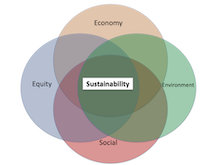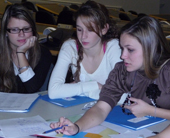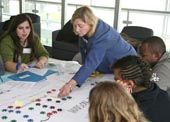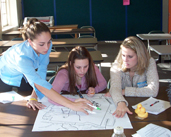
 |
 |
 |
 |
|---|
How do you plan a sustainable community?
Sustainable Planning
Lamont-Doherty Earth Observatory
- Did you know that many of the Hudson Valley's early thriving communities are now failing because they were not planned sustainably?
- Did you know that planning sustainably means thinking more broadly, considering multiple viewpoints and collaboration?
- Did you know that ‘planning’ is a process designed to channel citizen involvement towards an agreement? With wider involvement from community members planning can be more sustainable.
SUSTAINABLE PLANNING MEANS...
To plan a community that will be there for you and your family today, tomorrow and into the future.
What is Sustainable Development?
"Development that meets the need of the present without compromising the ability of future generations to meet their own needs." (World Commission on Environmen & Development 1987)Sustainability involves balance. It includes carrying capacity (considering it there are enough resources to support the plan), and long-term community vision that addresses three key pieces of human health and happiness: economics (jobs and services available), community (a social network of friends, family and neighbors, cultural acceptance, and cultural resources), and environment (clean air, water, health and surroundings). This means a sustainable community must have a balance of the following things:
- A social network that connects residents to each other and to the community. Education, health, safety and opportunity exist providing opportunity and a sense of belonging which can come from community activities, churches, youth groups, recreation, and schools.
- An economic engine to support the residents (money, jobs, trade, business) –a location where jobs and services are readily available for the individuals who live in the area.
- A healthy functioning environment with sufficient resources, for example clean air, water and natural ecosystems.
Human well-being does not have to come at the price of destroying ecosystems. In fact, preserving ecosystems provides humans with environmental services that can save us money!
- Community Character – Will this project enhance or significantly change the character of the community?
- Compatibility – Will the new project enhance or negatively impact the surrounding parcels of land?
- Conservation – Will the project preserve and enhance or will it negatively impact natural systems and open spaces?
- Capacity - Does the community have the infrastructure (roads, sewage, power, etc.) to support the new development?
- Consistency – Does the community have a Master Plan? If so is the proposed project consistent with other goals in the Master Plan, or with existing documents or plans that focus on the community’s future?
A PLANNING GUIDE FOR SUSTAINABLE DEVELOPMENT INCLUDES THE 5 Cs
The following questions are key to consider for any development, but are especially important for areas of redevelopment, where new pieces will need to fit into an existing community.
Questions for Further Discussion:
- In your own words, how would you describe sustainable development?
- Considering your definition, do you feel your community is currently sustainably balanced?
